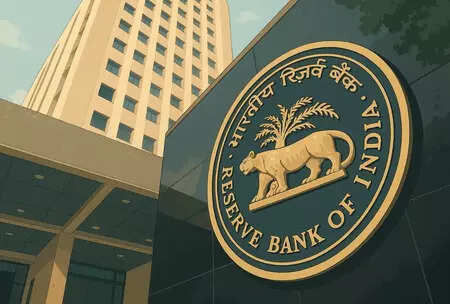Economists believe that the government’s proposed GST rationalisation will bolster domestic consumption, providing crucial support to the Indian economy amidst global headwinds like US tariffs. The reforms, benefiting MSMEs and consumers, aim to simplify the tax structure and boost disposable income. Reduced rates on essentials and consumer durables are expected to stimulate demand and offset weak urban consumption.
GST Overhaul: Could Lower Tax Slabs Spark a Spending Spree?
The rumblings around Goods and Services Tax (GST) are getting louder, and this time, the potential changes could have a tangible impact on your wallet. Forget abstract economic theories for a moment; we’re talking about whether that new washing machine, that weekend getaway, or even just your weekly grocery bill might become a little lighter. The winds of change are blowing, and the proposed GST rationalisation – specifically, the lowering of tax slabs – is generating plenty of buzz. But is it all hype, or could this actually be the shot in the arm that domestic consumption needs?
The current GST structure, while aiming for simplification, has created its own set of complexities. With multiple tax slabs, ranging from 0% to 28%, businesses face a constant juggling act to categorize their products and services accurately. Consumers, too, often find themselves scratching their heads, wondering why seemingly similar items attract different tax rates. The proposed rationalization aims to streamline this by potentially reducing the number of slabs and, crucially, lowering some of the existing rates.

So, what’s the big deal with lower tax slabs? The core idea is beautifully simple: lower taxes mean lower prices. And lower prices, in theory, should translate into increased demand. Think about it: if that television you’ve been eyeing suddenly becomes 5% cheaper, you might be more inclined to finally click “add to cart.” This increased demand, in turn, could boost production, create jobs, and generally inject some much-needed energy into the economy.
The impact wouldn’t be uniform across all sectors. Economists anticipate that essentials – the everyday items that fill our shopping baskets – could see a significant uptick in demand. If basic food items and household necessities become more affordable, it frees up consumers’ budgets to spend on other things. This ripple effect could then extend to durables – appliances, electronics, and furniture – as people feel more comfortable making larger purchases.
But it’s not all sunshine and rainbows. There are potential challenges. One concern is revenue neutrality. If the government lowers tax rates, it needs to ensure that it doesn’t lead to a significant drop in overall tax collection. This might involve broadening the tax base, improving tax compliance, or finding other ways to offset the potential revenue loss. Careful planning and execution are crucial to avoid unintended consequences. It is also possible that companies will not immediately pass on the reduced cost to consumers.
Another potential hurdle is inflation. If demand surges too quickly, it could put upward pressure on prices, potentially negating the benefits of lower tax rates. The Reserve Bank of India would need to carefully monitor inflation and adjust its monetary policy accordingly to maintain price stability. This requires a delicate balancing act, ensuring that the GST rationalisation stimulates growth without triggering inflationary pressures.
Moreover, the specific details of the GST rationalisation plan will be critical. Which tax slabs will be lowered? Which goods and services will be affected? How quickly will the changes be implemented? These are all crucial questions that will determine the ultimate impact of the reform. A poorly designed plan could actually do more harm than good, creating confusion and uncertainty for businesses and consumers alike. Consider the effect on the real estate market – streamlining GST could greatly impact housing affordability.
Ultimately, the success of this endeavor hinges on a well-thought-out and carefully implemented plan. If done right, lowering GST slabs could be a powerful tool to boost domestic consumption, stimulate economic growth, and make life a little more affordable for everyone. You might want to also check out our piece on changes to the Indian tax code here to stay up to date!
The proposed GST rationalisation presents an opportunity to unlock the potential of the Indian economy. By carefully calibrating the tax structure, the government can create a win-win situation – boosting consumption, increasing tax revenue, and fostering sustainable economic growth. The key is to strike the right balance, ensuring that the benefits of lower taxes are shared by all. Only time will tell if this bold move will pay off, but the potential rewards are certainly worth pursuing.







